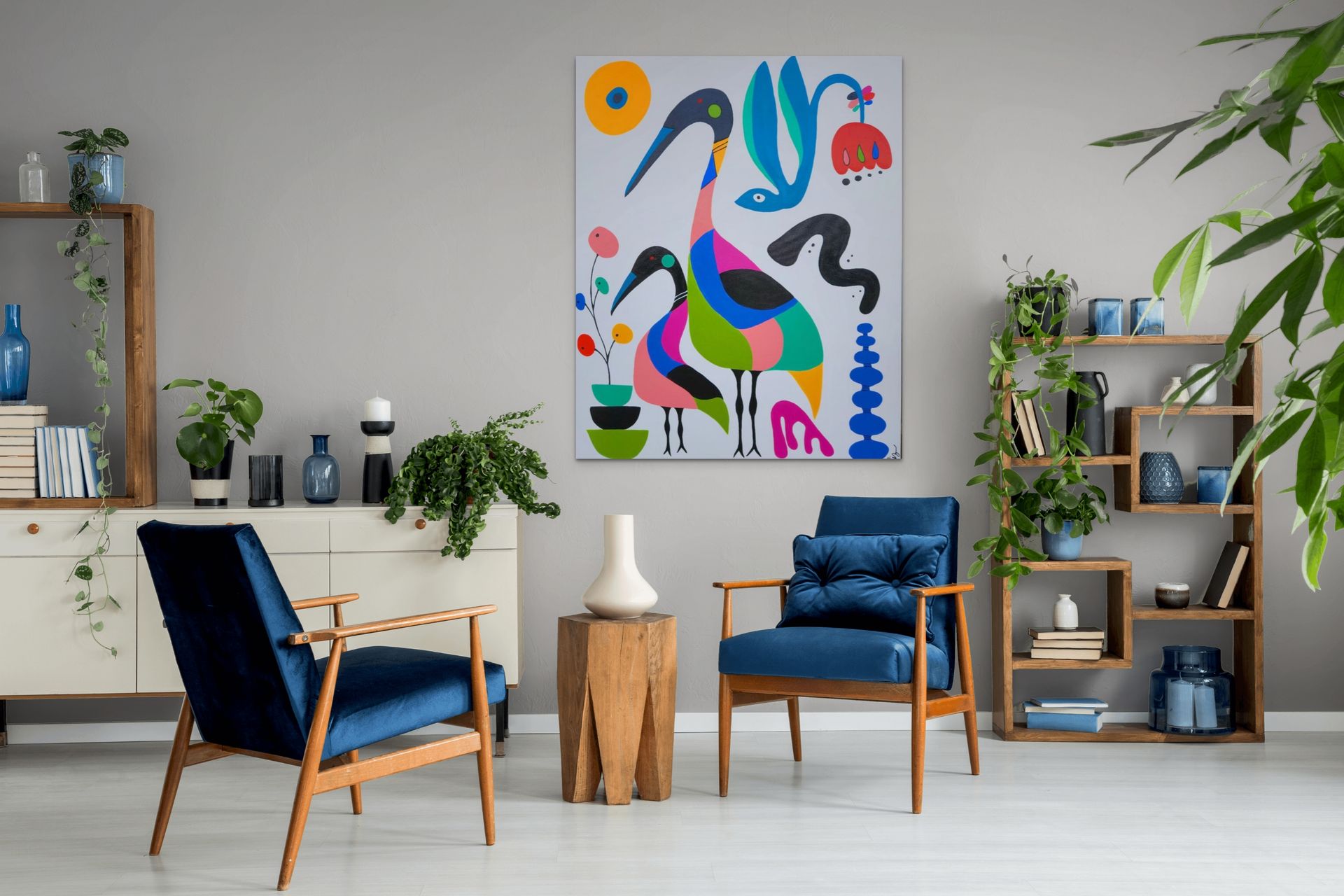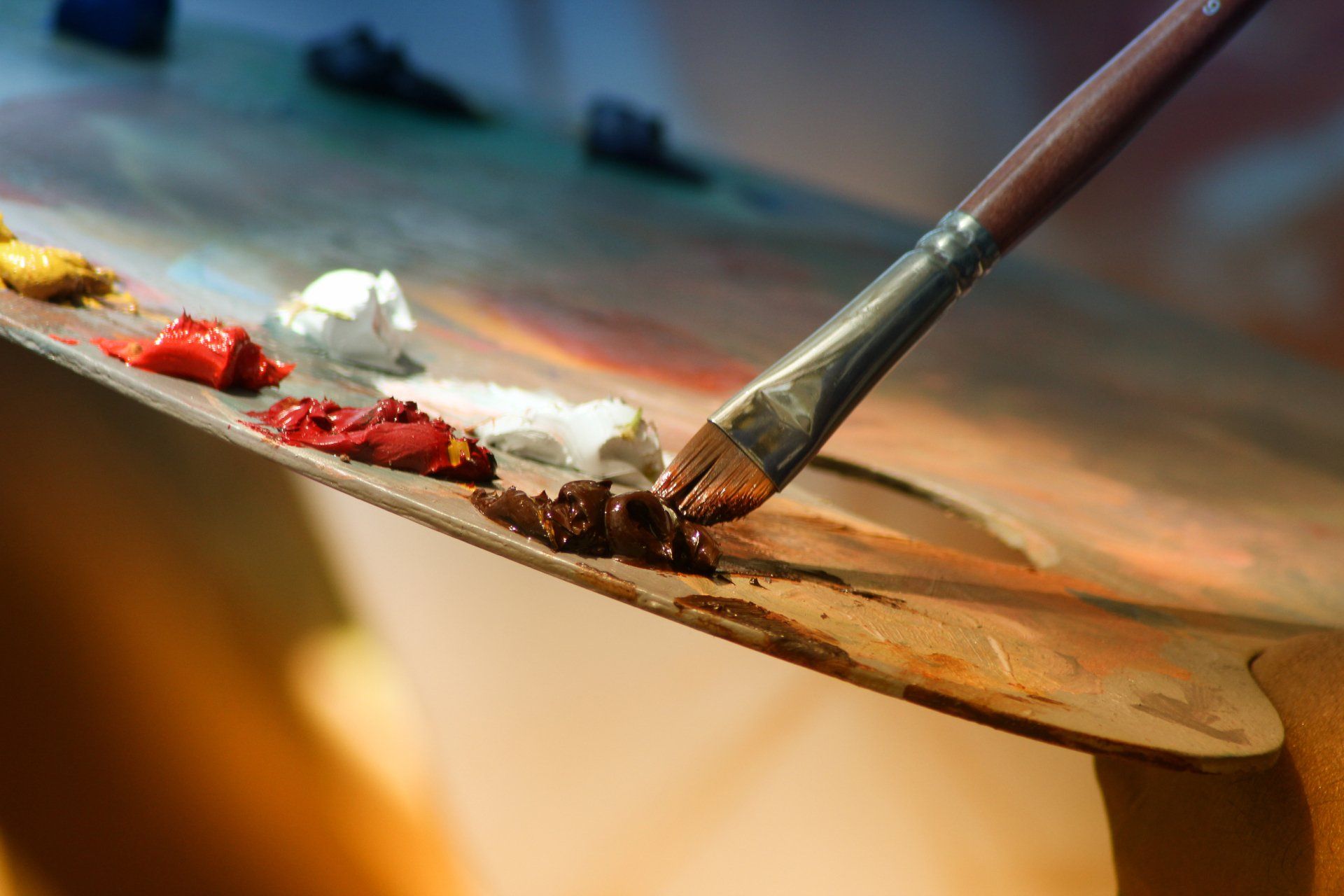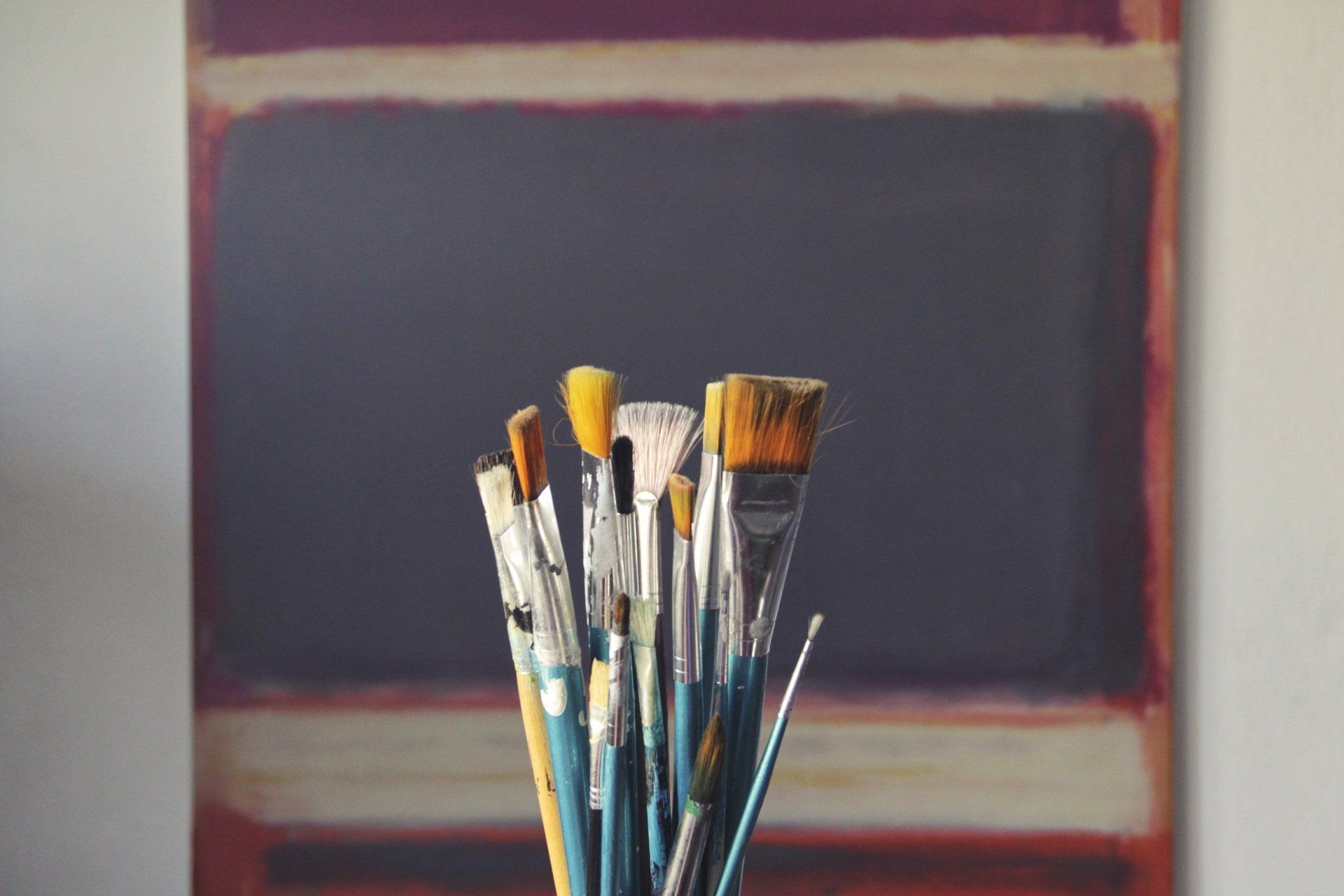What is Abstract Art?
Abstract Art Unveiled: A Journey into Expressive Depths

What is the meaning of abstract art?
The very term "abstract" beckons us to separate, to withdraw something from its conventional moorings. In the realm of artistic expression, abstract art takes this separation and transforms it into a visual language that transcends the literal and ventures into the realm of emotion, depth, and interpretation. This blog embarks on a journey to unravel the essence of abstract art, delving into its technical roots, exploring the personal perspective of artists, and celebrating the transformative power of abstraction in the world of creativity.
The Technical Essence of Abstract Art
At its technical core, abstract art involves the separation or simplification of forms derived from objects, figures, or landscapes. It is an art form that liberates itself from the constraints of literal representation, allowing the artist to distill the essence of an object or vision into a visual language that speaks beyond the confines of reality.
1. Simplification and Schematization:
The process of abstraction often involves simplifying or schematizing forms. Artists take inspiration from tangible objects, figures, or landscapes and distill them into fundamental shapes, lines, and colors. This reduction of complexity serves as a departure point from representational art.
2. Combination of Reality and Fantasy:
Abstract art has the unique capacity to exist on the spectrum between reality and fantasy. It is not bound by the need to faithfully replicate the visible world. Instead, it invites the artist to meld the tangible with the intangible, creating a fusion that is uniquely their own.
The Artist's Perspective: A Canvas for Emotion
For many artists, abstract art is not just a technical departure from representation; it is a profound expression of emotion. The canvas becomes a conduit for feelings, allowing the artist to infuse their work with a depth that goes beyond the visual.
1. Emotional Liberation:
Abstract art provides a space for emotional liberation. The act of separating from literal representation allows artists to tap into their emotions, unburdened by the need to adhere to the constraints of reality. The brushstrokes become a direct expression of the artist's internal landscape.
2. Interpretation of Objects and Images:
Abstract art, for many creators, is a process of interpretation. It involves taking an object, vision, or emotion and translating it onto the canvas in a way that is deeply personal. The artist becomes an interpreter, offering their unique perspective on the subject matter.
3. Achieving Depth and Effect:
The journey in abstract art often involves a meticulous exploration of colors and designs. Artists work tirelessly, manipulating the elements on the canvas until they achieve a depth and effect that resonates with their vision. It is a process of refinement, where each stroke contributes to the life that emerges on the canvas.
Abstract Art in Practice: A Symphony of Colors and Shapes
To understand abstract art, it's essential to explore its manifestations in practice. Artists engage with a myriad of techniques and styles, each contributing to the vast and diverse landscape of abstract expression.
1. Color as Emotion:
Abstract artists leverage color as a potent tool for conveying emotion. The choice of hues, tones, and contrasts becomes a language through which the artist communicates feelings. Vibrant colors may signify energy and passion, while muted tones might evoke introspection and contemplation.
2. Shapes and Forms:
Shapes and forms in abstract art go beyond mere representation; they become carriers of meaning. Geometric shapes may convey order and structure, while organic forms might evoke a sense of fluidity and dynamism. The interplay of shapes creates a visual dance that engages the observer.
3. Texture and Surface:
The tactile quality of abstract art often adds another layer to the viewing experience. Artists manipulate texture and surface to create a sensory journey. Whether through the application of thick paint, the addition of mixed media, or other techniques, texture becomes a language of touch.
The Fusion of Reality and Abstraction
Examining specific works of abstract art offers insights into the dynamic fusion of reality and abstraction. Each piece becomes a testament to the artist's interpretative prowess and their ability to breathe life into the intangible.
Wassily Kandinsky's "Composition VIII" (1923):
Kandinsky, a pioneer of abstract art, created "Composition VIII" as a symphony of colors and forms. The work is a testament to his belief that colors and shapes could evoke emotions and spiritual experiences. The canvas is a kaleidoscope of intersecting lines and vibrant hues, inviting viewers into a realm where reality and abstraction converge.
Joan Miró's "The Birth of the World" (1925):
Miró's masterpiece, "The Birth of the World," is a surreal exploration of forms and colors. The canvas appears as if it is in a constant state of becoming, with abstract shapes hinting at the emergence of life. Miró's fusion of reality and abstraction creates a dreamlike narrative that transcends conventional representation.
Lee Krasner's "Combat" (1965):
Lee Krasner, a key figure in the abstract expressionist movement, created "Combat" as a visceral expression of emotion. The bold brushstrokes and dynamic composition reflect the intensity of her feelings, providing a window into the artist's emotional landscape. The work is a fusion of the real and the imagined, capturing a moment of internal strife.
Abstract Art in the Art World: A Paradigm of Interpretation
Abstract art occupies a unique place in the art world, serving as a paradigm of interpretation and a canvas for diverse perspectives. Its impact reverberates not only in galleries but also in the way we perceive and engage with artistic expression.
1. Endless Interpretations:
One of the defining features of abstract art is its openness to interpretation. A single piece can evoke a myriad of meanings, and each observer brings their unique perspective to the canvas. This inclusivity allows for a rich and continuous dialogue between the artwork and its audience.
2. Expanding Boundaries:
Abstract art expands the boundaries of artistic expression. It challenges the notion that art must faithfully replicate the visible world and opens up new possibilities for creators. The movement has paved the way for experimentation and innovation, influencing subsequent generations of artists.
3. Subjectivity in Appreciation:
Appreciating abstract art involves a subjective journey. The observer is invited to explore the depths of their own emotions and perceptions, forging a personal connection with the artwork. The experience becomes a co-creation between the artist's intent and the viewer's response.
The Contemporary Resonance of Abstract Art
Abstract art, far from being confined to a specific period, continues to resonate in contemporary artistic practices. Artists today draw inspiration from the principles of abstraction while pushing the boundaries of the form.
1. Digital Explorations:
The digital age has given rise to new forms of abstract art. Digital artists leverage technology to create dynamic and immersive works that echo the spontaneity and emotion of traditional abstract expression. The digital realm becomes a canvas for exploration and innovation.
2. Interdisciplinary Influence:
The influence of abstract art extends beyond the realm of visual expression. Its principles have inspired musicians, dancers, writers, and performers. The ethos of interpretation, emotion, and the fusion of reality and abstraction permeates diverse creative disciplines.
The Personal Journey: Abstract Art as an Expression of Self
As artists engage with abstract art, it becomes a deeply personal journey—an exploration of self, emotion, and the limitless possibilities of expression.
1. A Unique Language:
Abstract art offers artists a unique language with which to communicate. The canvas becomes a space where emotions can be articulated without the constraints of representation. Each brushstroke becomes a word, and each color a note in the artist's personal symphony.
2. Embracing Uncertainty:
The beauty of abstract art lies in its embrace of uncertainty. The artist need not have a predetermined outcome; instead, the process becomes a journey of discovery. The unpredictability of abstraction allows for serendipitous moments of creation.
3. Freedom of Interpretation:
For both artists and observers, abstract art embodies the freedom of interpretation. The absence of a fixed narrative or recognizable forms liberates the creative and interpretative faculties. Each encounter with an abstract piece is an invitation to explore, feel, and interpret without boundaries.
Conclusion: The Ever-Evolving Language of Abstraction
In the vast tapestry of artistic expression, abstract art stands as a dynamic and ever-evolving language. It is a language that transcends the literal, inviting us to explore the depths of emotion, the fusion of reality and fantasy, and the boundless possibilities of interpretation.
As we contemplate the meaning of abstract art, we recognize its transformative power—the ability to liberate, to evoke, and to inspire. Abstract art is not merely a departure from representation; it is an entrance into a realm where the artist's emotions become strokes of color, and the canvas becomes a mirror reflecting the diversity of human experience. In the uncharted territories of abstraction, we discover not only the art itself but the limitless potential of expression that resides within us all.



